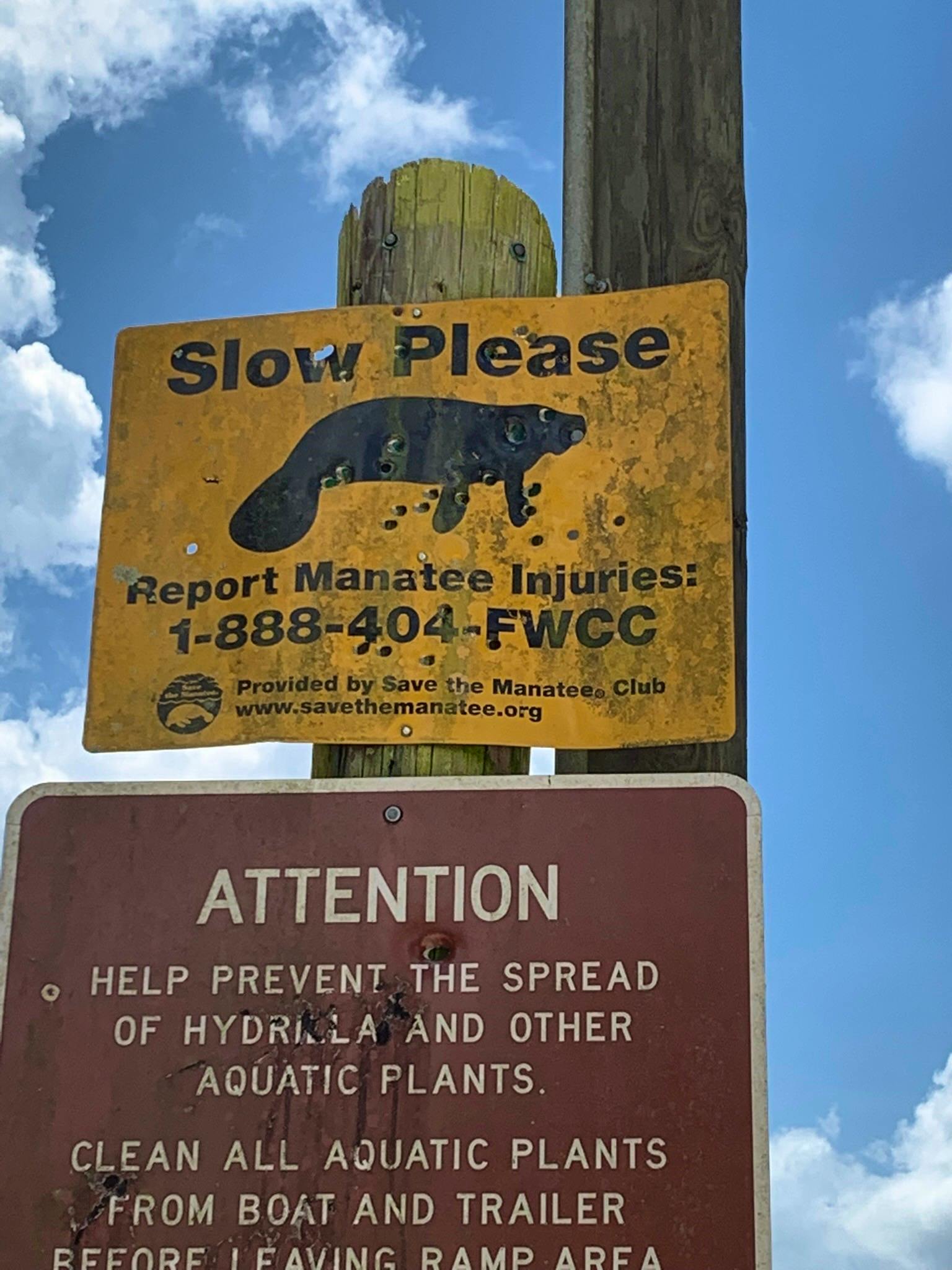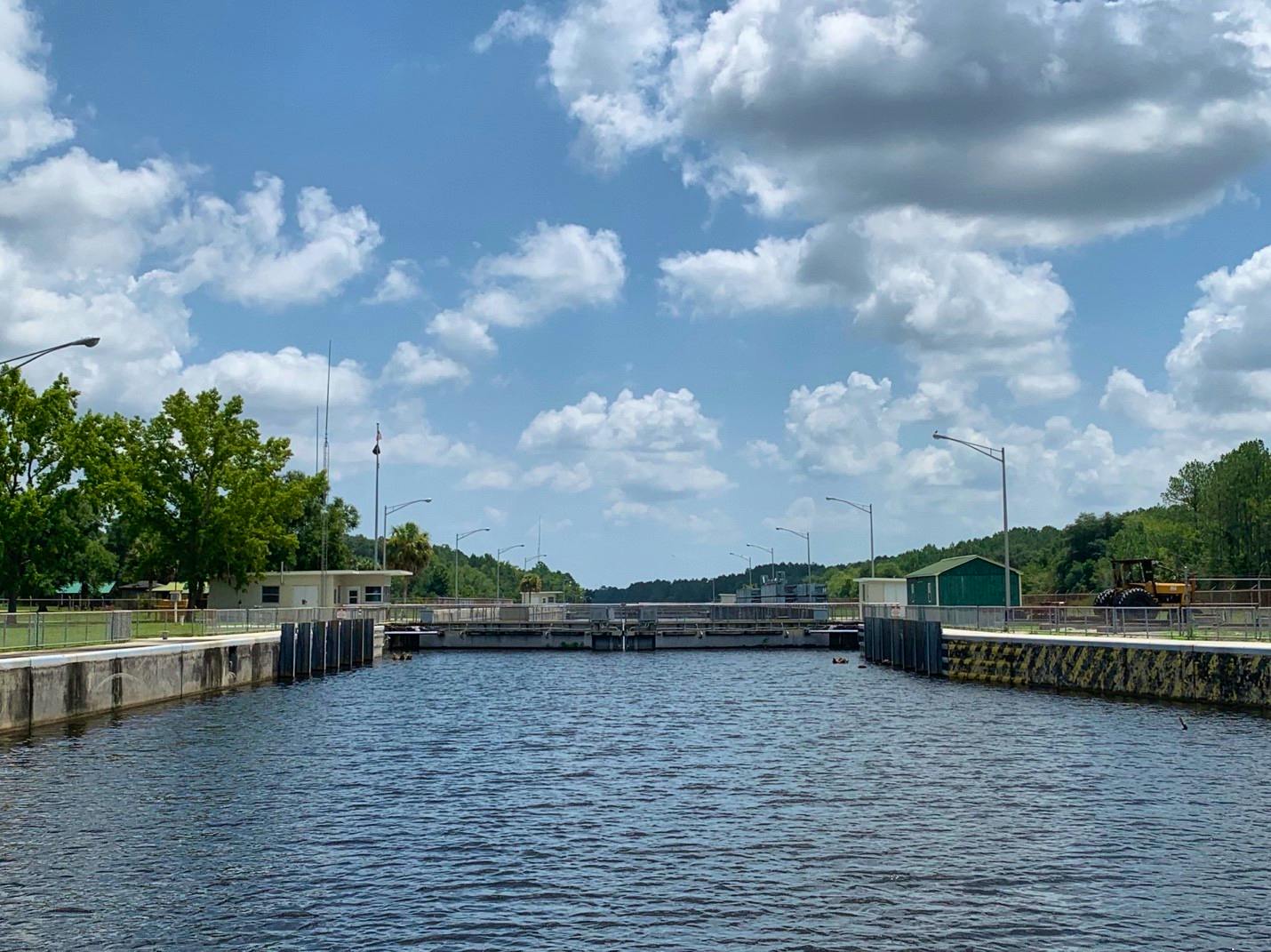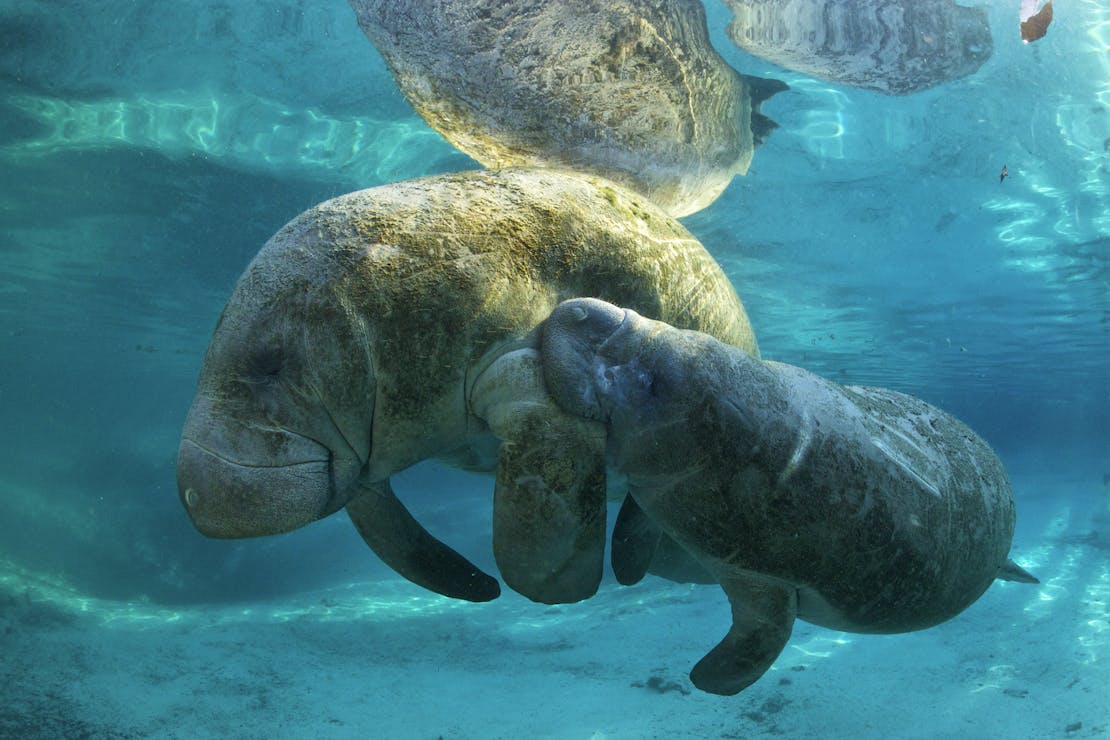Reflections on a Visit to the Rodman Reservoir
The story of the Ocklawaha River encapsulates the story of Florida’s natural environment. Florida’s environmental story is a story of a place with rich ecosystems, but a story of misguided destruction and of good intentions borne by a population that overwhelmingly supports conservation. It is a story that residents and visitors read anxiously, hoping the next chapter will see our water clean, our communities safe, our beloved wildlife and landscapes — livelihoods as much as treasures — protected.
I had the opportunity to visit the Rodman Reservoir and Ocklawaha River this summer, and the word that came to mind while there was “potential.” So much potential lies in the prospect of restoring the Ocklawaha River to a free-flowing state, including the potential to uncover the “buried treasures” that are its freshwater springs, long-submerged by the murky waters of the Rodman Reservoir. Restoring the Ocklawaha would reveal other, necessary treasures, too: not least of all, likely benefit to water quality in its interconnected system, improvement to the local economy, significant increase in fish populations, and improved habitat and connectivity for native species, especially the threatened Florida manatee.
The Ocklawaha River, the largest tributary of the St. Johns River, once flowed freely, fed by a multitude of freshwater springs; however, the Ocklawaha has been dammed since 1968. The Rodman Dam, renamed the “Kirkpatrick Dam” in the 1990’s (but largely referred to by both names), was a component of the ill-fated Cross Florida Barge Canal, a project authorized by Congress in 1942. The Barge Canal, intended as a shipping canal to connect Yankeetown on the Gulf of Mexico to Jacksonville on the Atlantic Ocean, was halted by Executive Order in 1971 due to the immense environmental destruction associated with its construction. In the mid-1990’s, the Department of Environmental Protection began managing the barge canal property as the Marjorie Harris Carr Cross Florida Greenway. Despite the Barge Canal project’s cancellation and the fact that it does not generate power nor any other resource, the Kirkpatrick Dam remains.
The destruction in the sixties was enabled by machines called “Crusher-Crawlers,” which flattened thousands of cypress trees in the Ocklawaha River floodplain. It also inspired a local environmental movement led by Marjorie Harris-Carr with Florida Defenders of the Environment. Marjorie’s granddaughter and Ocklawaha restoration advocate, Jennifer Carr, joined me on my visit to the area.


I had the opportunity to visit the Rodman Reservoir by boat via Karen Chadwick, a local boat captain and advocate for restoration of the Ocklawaha River in her capacity as Executive Committee Member at Large with Florida Defenders of the Environment. Having lived much of my life in Central Florida, I’ve spent many weekends in the Ocala National Forest; the journey north into the golden quiet of the woods felt deeply familiar. However, the moment I walked up to the Kenwood Boat Ramp, greeted by invasive vegetation carpeting the water and a manatee safety sign riddled with bullet holes, I sensed that I was to witness a darker, stranger plotline within Florida’s environmental story — a plotline that still has great potential for a positive ending.


As we lowered the boat into the reservoir and began our journey towards Buckman Lock, I was taken aback by the largeness of the Rodman Reservoir. I had read of the reservoir’s size – covering over 9,000 acres– several times; however, its vastness did not sink in until I saw with my own eyes the expanse of murky water punctuated with the balding tops of submerged cypress trees. In person, it is very apparent that damming the Ocklawaha River drowned an ecosystem; potential for a natural Atlantis lingering below the surface. Despite the passing of decades since the Ocklawaha flowed freely, the memory of the forest persists, both through the tree top “stumps” peeking over the water and in dozens of dead tree trunks floating through much of the Reservoir but clustered primarily against the Kirkpatrick Dam itself. The tree tops are many, yet often difficult to detect (many lingered just below the water); I was grateful to be with Captain Karen, who navigated the waters expertly, sharing with me stories of others’ stump-related boating mishaps.
Despite the Rodman Reservoir being touted as a “premier largemouth bass fishery,” we counted perhaps four other boats on the water — and one of them, according to its sole occupant, was engaged in “magnet fishing” for firearms and other metal goods. I found this lack of use to be surprising on a sunny Sunday afternoon in late June.
I was also struck by the proliferation of invasive aquatic vegetation, specifically water hyacinth and water lettuce; the Florida Department of Environmental Protection (FDEP) describes the area as having “serious invasive exotic species problems.” According to FDEP, the Florida Fish and Wildlife Conservation Commission (FWC) budgets approximately $30,000 per year for aquatic plant control in Rodman Reservoir. Karen shared with me this that involves significant spraying of herbicides, enough to disturb the fish in the reservoir, causing them to “gasp for air at the surface” when these plants die, settle to the bottom and decompose, robbing the water of oxygen.


In addition to herbicides, the State manages the invasive plants by conducting drawdowns every few years; during these drawdowns, the water level is lowered, drying the shallow areas and killing these invasive plants. The drawdowns also provide the public with a glimpse at the 20 turquoise springs beneath the reservoir. Karen shared a photo of a kayaker on one of the submerged springs, Cannon Springs, during the 2016 drawdown — a dramatic contrast to another photo of the murky, day-to-day reservoir water. FDEP stated in a July 2019 announcement that the benefits of these drawdowns include “oxidation and consolidation of bottom sediments, increase in native plant diversity, decreased need for chemical weed control, enhancement of sport fisheries and general improvement of the ecological health of the system.”
All these benefits, of course, could be present permanently with restoration of the Ocklawaha River.
We approached the Buckman Lock, another left-over component of the Cross Florida Barge Canal, which allows migrating boats, manatees, and fish to move the 14 to 16 feet elevation difference between the Rodman Reservoir and the St. Johns River. I was interested to see the Lock as it was formerly a death trap for manatees, though one that has lessened considerably since the installation of manatee protection devices. As the locks are open for only very limited periods of the day and are closed entirely Monday through Wednesday, manatees seeking food will swim to the locks and wait at a standstill until the locks open, allowing them to travel the 600-foot lock chamber to the other side.
Fossils collected from the area indicate that manatees have long used the Ocklawaha River basin, and the abundant springs below the reservoir promise much for the iconic species here. Research suggests that “many hundreds of manatees” — desperate for accessible warm-water refugia with the stresses of climate change, development and artificial warm-water sources posed to shut down or phase out warm water discharge — could find warm water habitat here if the Ocklawaha River was restored to a free-flowing condition.


After completing our tour by boat, I followed Karen a few miles down the road for the opportunity to walk upon the dam itself. The Kirkpatrick Dam is 7,200 feet long and primarily earthen, with a man-made spillway that discharges water from the reservoir into the original channel of the lower Ocklawaha River. Like a gate between two worlds, the dam sits between the murky, log-crowded reservoir and the peaceful lower Ocklawaha, which stretches into the forest like a mythical road into a wilder, simpler time. Many families sat along the shore of the Ocklawaha, fishing and enjoying the June afternoon — a contrast to the virtually-empty reservoir. This impression aligns with economic research noting the popularity of shore fishing along the river and concluding that “activities on the natural stretches of the Ocklawaha River result in greater contributions to the regional economy, compared to the recreation on the Rodman Reservoir sites.”
Restoration of the Ocklawaha River would likely improve the local economy by supporting the most economically beneficial uses of the river. Additionally, while virtually all opposition to restoration of the Ocklawaha River has come from a small group of boating sport fishermen, an ecological study on fisheries impact from restoration concluded that sport fishing opportunities for species like the striped bass will increase, and a viable riverine largemouth bass fishery will persist. Of note, the groups opposed to Ocklawaha restoration are primarily focused on fishing for largemouth bass for sport from boats rather than subsistence; in fact, due to mercury contamination, the Florida Department of Health advises that women of childbearing age and young children never eat largemouth bass caught in the reach of the river downstream of the dam.


Those of us living within the pages of Florida’s environmental story know that this is a pivotal chapter for water quality, with severe issues such as toxic algae and invasive plants plaguing water bodies throughout the state. This spring and summer, the St. Johns River has experienced its share of harmful algal blooms, connected to nutrient pollution from agriculture, sewage sludge, septic tanks and yard fertilizers, empowered by rising temperatures. A 2016 report issued by the St. Johns River Water Management District suggests that restoration of the Ocklawaha River would not exacerbate nutrient pollution in the St. Johns River — and, as demonstrated by instances of dam removal around the country— would very well improve water quality, over time.
Governor DeSantis campaigned on water quality, and he followed through with an Executive Order at the beginning of his tenure. The Executive Order begins by stating: “[W]ater and natural resources are the foundation of Florida’s communities, economy and way of life; and ... protection of water resources is one of the most critical issues facing our state and requires immediate action[.]”
In 1995, the then-Governor Lawton Chiles mandated that the Ocklawaha River was to undergo “partial restoration” to “restore river hydrology and floodplain function to near preconstruction conditions through breaching of the dam” with limited alteration of structures and topography. Over 24 years later, the Legislature has not appropriated funds for this purpose; in the Unit Management Plan encompassing the Rodman Reservoir, FDEP states that “[i]f funds are made available and permits are issued, it is the intent of the FDEP to undertake this restoration,” reasoning that “[t]he Ocklawaha and St. Johns Rivers are critical resources to the state of Florida and DEP is committed to their protection.”
So much potential lies in restoration of the Ocklawaha River. Like the water of Florida’s natural, freshwater springs, the many treasured benefits —including benefits to the state’s longest river and the Floridians that reside in the 18 counties connected to its system — to come with restoration are crystal-clear. It remains to be seen whether the next chapter of Florida’s environmental story reads of these treasures, or if they are to remain buried beneath inaction and murky water.
For the sake of water quality, wildlife habitat, the economy, and more — may the next chapter of the Ocklawaha’s story be written with care. Governor DeSantis: you and the Florida Legislature hold the pen.
- Elizabeth Neville, Manatee Advocate









